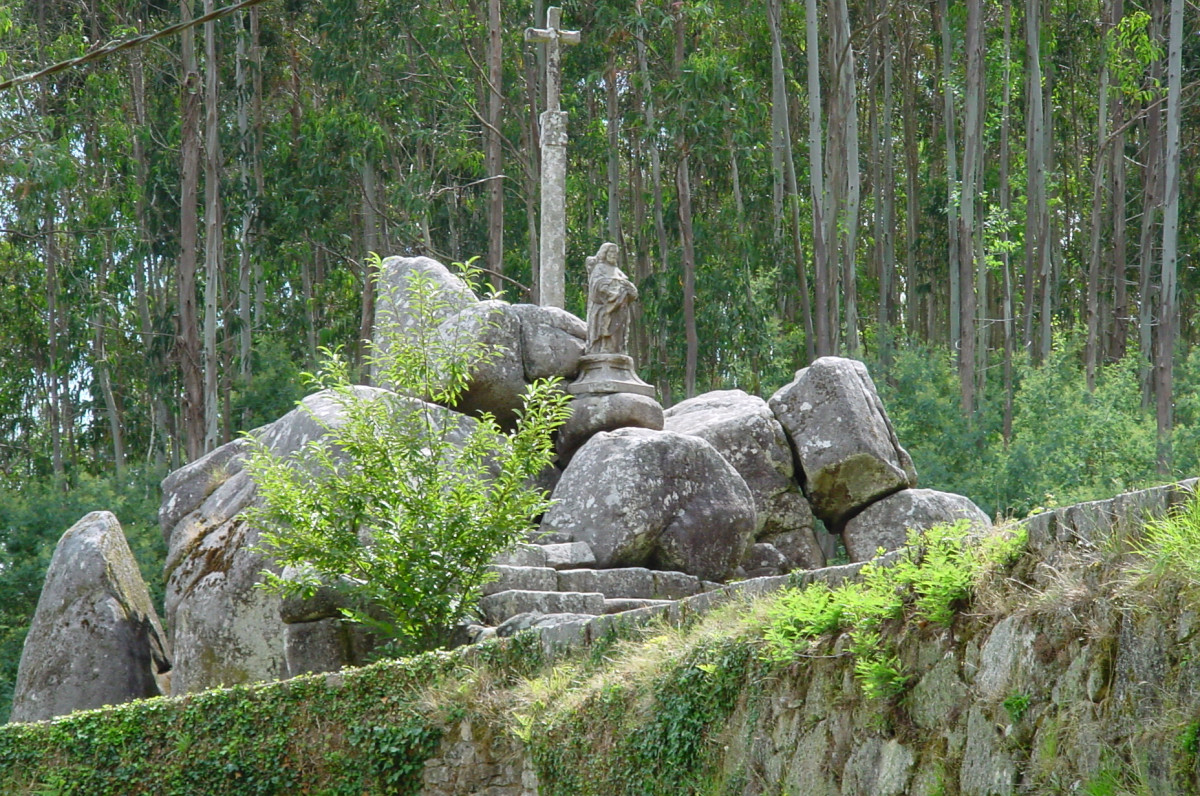
The town of Padrón has a long pilgrim tradition since the Middle Ages. According to the legend, if the Cathedral of Santiago is located where it is currently is because previously, the body of Santiago Apostle passed through Padrón. For this and many other reasons, it is a must stop for pilgrims and lovers of the Camino de Santiago.
From Scala Hotel, we know first hand the importance that Padrón has for the Camino de Santiago and we want if you visit it, do not leave any of its most emblematic places of pilgrim culture without seeing.
El Pedrón: This Roman votive altarpiece of granite is one of the things that most mysticism and stories keep inside the capital of Sar, in fact, many people say that the name of this locality comes from it. This object of ancient cult, has had several uses throughout history, was believed to be a small Menhir, later an altar, a bollard to moor the ships in the port of Iria Flavia in Phoenician epoch. It is dedicated to Neptune, as can be seen in his engraving.
But ... What has it to do with the Way? According to the legend, the Apostle James after his beheading in Palestine, was brought by his disciples Athanasius and Theodore in a boat (some say it was made in stone, some say it was made in marble) until they reach standard lands across the Sar river, and it was precisely in that bollard where the boat was moored. At present there is only one stone with the inscription "Dominus Ecclesia Procurator edificavit in era MCLXXI" ("The procurator of the church built in the MCLXXI era") on the left hand of the river, in memory of the first Church that was built in honor of the Apostle.
Church of Santiago de Padrón: There are numerous places marked by the passage of the Apostle in these lands, but undoubtedly, one of the most important is this church. In it there are numerous images of the Apostle Santiago, like Santiago Pilgrim or the disembarkation of the Apostle and his disciples in Padrón, but one of the most peculiar images that encloses this church is Santiago "O parrandeiro", size of century XVIII to the which is dedicated to a romería every 25 July. Under its main altar, we find the Pedron previously mentioned, which is shown to anyone who requests it.
Convent and fountain of Carmen: After crossing the Bridge of Santiago in Padron, you can see this convent in front of you. Located in a privileged place, on top of Costiña do Carme and attached to Mount San Gregorio, this neoclassical convent, has become one of the best viewpoints of the area. It passed through the hands of the Discalced Carmelites and the Dominicans. Very close to there, passing the hostel of pilgrims, we find the fountain of natural waters with the same name as the convent. This fountain of three bodies, includes three very important images in Galician religious culture: the Virgin of Sorrows (patron saint of good birth), the transfer of the Apostle Santiago by his disciples and the baptism of the Queen Loupe by the Apostle Santiago. Inside the fountain, you can see a plaque indicating that 40 days of indulgence are granted to all who pray a salve before the image of the virgin.
Santiaguiño do Monte: To get to the recreational area of Santiaguiño do Monte, you can reach by the 132 steps that begin near the convent of Carmen or by car. Once there, there stretches before us a large rest area, which has tables, grills, fountains and children's playground. There are 3 key points:
-The hermitage of Santiaguiño do Monte: A mixture of other hermitages previous, although it is believed that the oldest part was created in the fifteenth century. In it is the tomb of St. Gregory, canon of Iria Flavia who built the houses of poor families with their own funds. To this hermitage, the little statue of Santiago "O parrandeiro" rises on July 25 during the celebration of San Gregorio
-The fountain: It is believed that this fountain was the fruit of a miracle of the Apostle, which caused water to sprout from the ground to quench the thirst of a gentle woman. In it, pilgrims who approached to Padrón drank and washed. Nowadays, there is the rite of collecting water from this source on the eve of San Xoán to mix it with herbs and to ward off evil spirits.
-The rocks: In the center, there is a figure of the Apostle on a stand. Also for many centuries, pilgrims climbed on these rocks on their knees praying on each of the steps. The popular belief assures that if you do not go whan you are alive, you must to go when you are dead. In addition, in them, there are three holes that are attributed to the Apostle or even to his horse. Each of them receives a name: hell, heaven and purgatory.
After this tour of the most emblematic areas for pilgrims, what better than to rest in one of the best hotels in Padrón?
Come to Hotel Scala and enjoy the best rest with us!